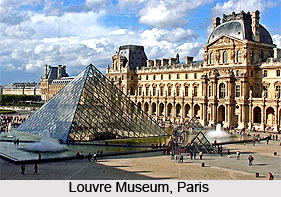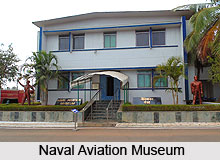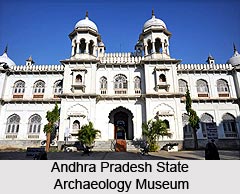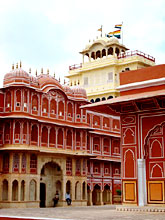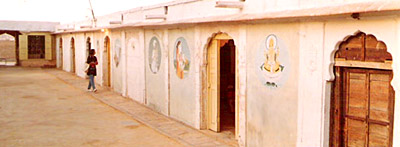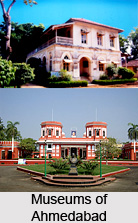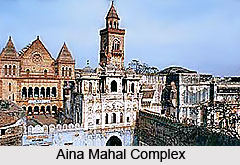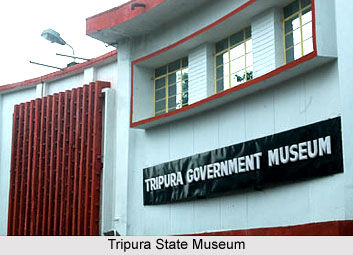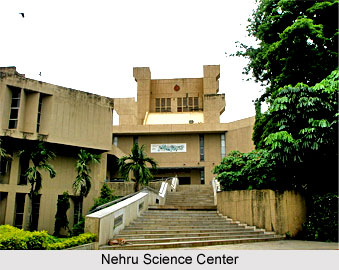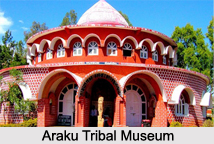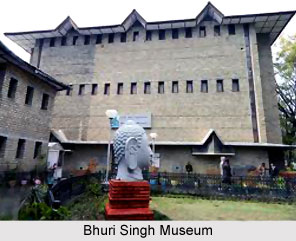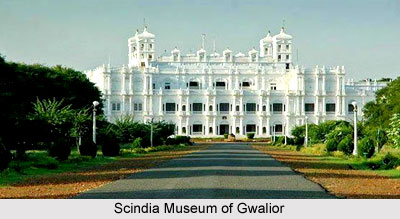 Hasta Shilpa is a heritage village located in the Indian state of Karnataka. More specifically, this village is situated in Manipal, the renowned university town in the coastal region of Karnataka. It can be defined as a multi-dimensional cultural project, which was conceived by Vijayanath Shenoy and became a reality due to his efforts. He is identified as a retired bank officer of the Syndicate Bank. He is credited with the restoration of about 26 structures of historical and architectural importance, which would have otherwise failed to exist without his support. This project not only received national but international support. It was funded by the State Government of Karnataka along with the Norwegian, Finnish and Netherlands governments. The managing body of this village is the Hasta Shilpa Trust, with Mr Vijaynath Shenoy being its founder and secretary. Today, Hasta Shilpa has developed into a valuable village of Karnataka. It is famous globally and is frequented by eminent contemporary artists, critics and members of the corporate world.
Hasta Shilpa is a heritage village located in the Indian state of Karnataka. More specifically, this village is situated in Manipal, the renowned university town in the coastal region of Karnataka. It can be defined as a multi-dimensional cultural project, which was conceived by Vijayanath Shenoy and became a reality due to his efforts. He is identified as a retired bank officer of the Syndicate Bank. He is credited with the restoration of about 26 structures of historical and architectural importance, which would have otherwise failed to exist without his support. This project not only received national but international support. It was funded by the State Government of Karnataka along with the Norwegian, Finnish and Netherlands governments. The managing body of this village is the Hasta Shilpa Trust, with Mr Vijaynath Shenoy being its founder and secretary. Today, Hasta Shilpa has developed into a valuable village of Karnataka. It is famous globally and is frequented by eminent contemporary artists, critics and members of the corporate world.
Museums of Hasta Shilpa Heritage Village
Since Hasta Shilpa is a heritage site which aims to preserve and restore India"s cultural wealth in terms of traditional buildings, art and craft and other relics of aesthetic interest (some of them being as old as several hundred years) development of a number of museums and galleries is pertinent to it"s aim. These are the Museum of Folk Arts, Ganjifa Gallery, Raja Ravi Varma Museum, Mercantile Museum, Museum of Contemporary Arts, Sam Adaikalasamy Art Gallery, Museum of Arts and Crafts, Museum of Thanjavur Paintings, Basel Mission Museum of Terracotta Products and Reghu Gallery.
Museum of Folk Arts
Museum of Folk Arts was established with the support of the Embassy of Finland in New Delhi. This museum has three buildings in which its contents are preserved. The contents are divided into eight different sections. These relics are metal icons of Karnataka and other states of India, an ancient building form and character of a garodi, a traditional structure of a shrine with wooden folk-deities of varying sizes, folk musical instruments, the stone and metal figures and wooden masks from Chattisgarh region, bronze masks of folk-deities seated in folk-furniture with traditional ritual objects associated with the worship of folk deities, the folk theatre crafts like Yakshagana, puppetry, moodalapalya and nandi kunita and the household and occupational articles and artifacts. This museum is recognized as one of the largest and most unique museums of its kind in India in terms of volume of space, number and variety of objects, rare character of its exhibits and their creative display.
Ganjifa Gallery
Ganjifa denotes hand-made and hand-painted traditional playing cards, which were prevalent in India since the medieval age. It is during the 16th century, that the art and games related to these cards gained popularity in India, more specifically under the rule of Mughal Emperor, Akbar. These cards are theme based and the ganjifa packs have a range of themes from the social to religious ones.
The 52 panels of this gallery exhibit a variety of ganjifa cards. In these panels, the expertise of the artists of the 19th century (Na. Ra.Kelkar) and that of the early 20th century are displayed in the form of Ganjifa art. More specifically, the panels are adorned with the standard Dashavatara cards and its variations, Mughal Ganjifa and variations such as Arundhati and Saptarishis, Navadurga, Navagraha, Rashi Ganjifa, Ramlila, Sonepur Ramayana Ganjappa and Naqsh, Mysore Chad and a tarot set. Each panel is informative about the sets, the cards on display and also provides details regarding their features.
Raja Ravi Varma Archival Museum
Raja Ravi Varma is a famous Indian Painter from Kerala. His creations were a blend of Indian art tradition and the techniques of European academic art. The exhibits of this museum are the color reproductions of the works of not only Raja Ravi Varma but also of a plethora of other Indian artists who were inspired by the paintings of Ravi Varma. These exhibits were garnered from the Ravi Varma press itself. This museum also houses calendars, labels of consumer products, posters, playing cards and match-box labels. Other archival materials of this museum are machineries used for printing process, litho stones with the impressions of the works of Ravi Varma, packets of special color ink powder made in Germany.
Mercantile Museum
 Mercantile Museum is a home to a large collection of articles and artifacts which were valuable for the traders and merchants for their trading activities conducted in the coastal and hinterland port towns of Dakshina Kannada district. Authentic mercantile instruments preserved in this museum are traditional fish-nets and deep-sea surveying instruments and accessories, weighing stones made of iron, stone and brass, scales and balances of every description, rice measures, grain measures and oil measures. This museum will intimate its visitors with the small-size cargo-carrying boats used by the traders, ship lamps, signal lamps and sailing vessels.
Mercantile Museum is a home to a large collection of articles and artifacts which were valuable for the traders and merchants for their trading activities conducted in the coastal and hinterland port towns of Dakshina Kannada district. Authentic mercantile instruments preserved in this museum are traditional fish-nets and deep-sea surveying instruments and accessories, weighing stones made of iron, stone and brass, scales and balances of every description, rice measures, grain measures and oil measures. This museum will intimate its visitors with the small-size cargo-carrying boats used by the traders, ship lamps, signal lamps and sailing vessels.
Museum of Contemporary Arts
Museum of Contemporary Arts houses the paintings of artists like K.K Hebbar, Laxman Pai, Almelkar, S.G Vasudev, JMS Mani, Rajavelu, J. Khande Rao and Peter A. Lewis. Few sculptures made by artists like D.P. Roy Choudhury, S. Dhanapal, Mario and Vijayavelu also comprise the exhibit in this museum.
Sam Adaikalasamy Art Gallery
Adaikalasamy is recognized as an art designer and had worked in the Weavers" Service Centre attached to the Office of the Development Commissioner (Handlooms) functioning under the Ministry of Textiles, Government of India, from 1981 to 2007. Sam Adaikalasamy Art Gallery houses all the creations of this designer. They are his 100 large-size paintings, an equal number of small-size paintings, a score of copper panels and a handful of terracotta sculptures.
Museum of Arts and Crafts
Museum of Arts and Crafts is a three-storied building. Traditional and contemporary Alankar Kala, which stands for decorative crafts as well as physical objects are housed in the top floor of the building. They are known to be used by men for their vilas or indulgence and recreation. They were even used by women for their shringar or body beautification and also for recreation. Aradhana Kala, which stands for traditional ritual arts comprising of wooden idols and panels of gods and deities in classical tradition, stone statues and terracotta figures and also the ritual objects and icons in metal ware in the same tradition are housed in the ground floor of the building. The basement of the building is adorned with old wooden structural craft.
Museum of Thanjavur Paintings
Thanjavur Paintings are known to belong to a unique school of paintings, which originated in Thanjavur in Tamil Nadu in the 18th century. The contents of this museum are about 150 works of Thanjavur School of Maratha period, about 18 glass paintings of the earlier Nayaka period and an equal number of glass paintings of post-Maratha period.
Basel Mission Museum of Terracotta Products
In the earlier part of the 19th century, German Protestant Missionaries arrived in South Kanara district of Karnataka from Basel in Switzerland and had initially set up terracotta roofing tiles factories in Mangalore. The Basel Mission Museum is a home to almost all the structural, domestic and decorative terracotta products, which were designed and produced in these factories. This project was supported by Volkart Foundation of Switzerland.
Reghu Gallery
Reghu Gallery houses the works of G. Reghu, who is known to be adroit in producing ceramic and terracotta sculptural art.
Related Articles:
Indian State Museums
Museums of Karnataka
Museums Of Tamil Nadu
Museums of Andhra Pradesh
Museums of Kerala
Museums of Maharashtra
